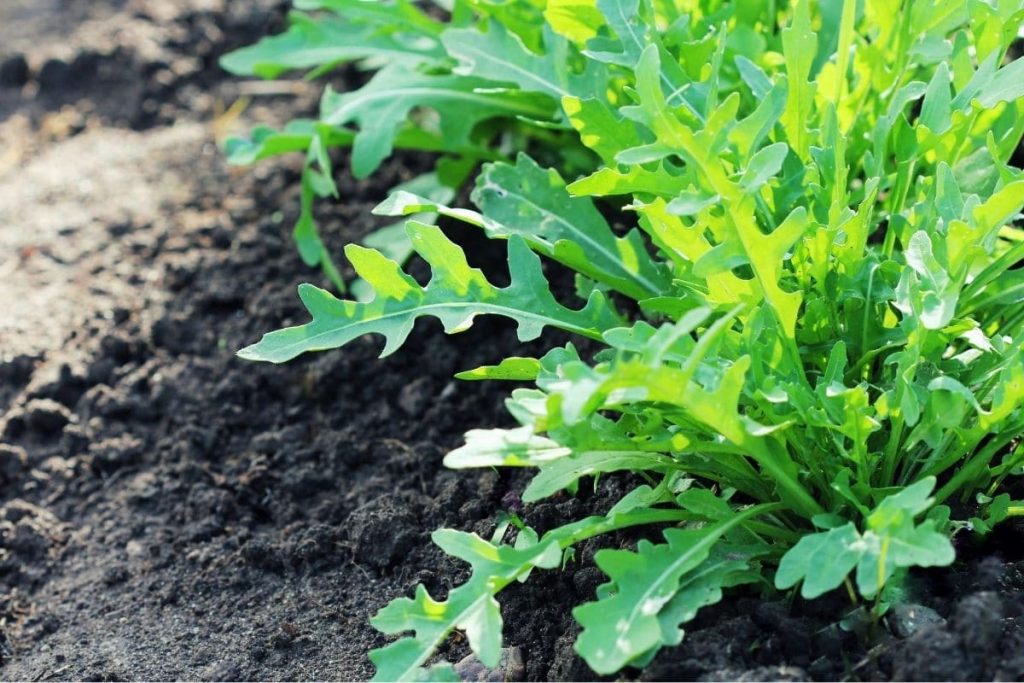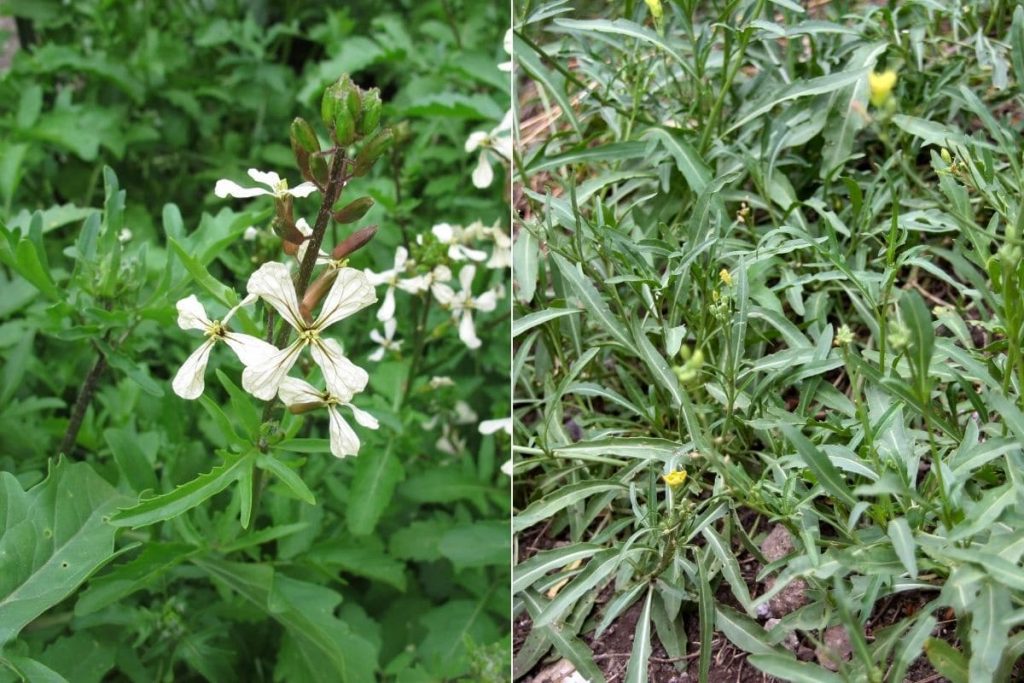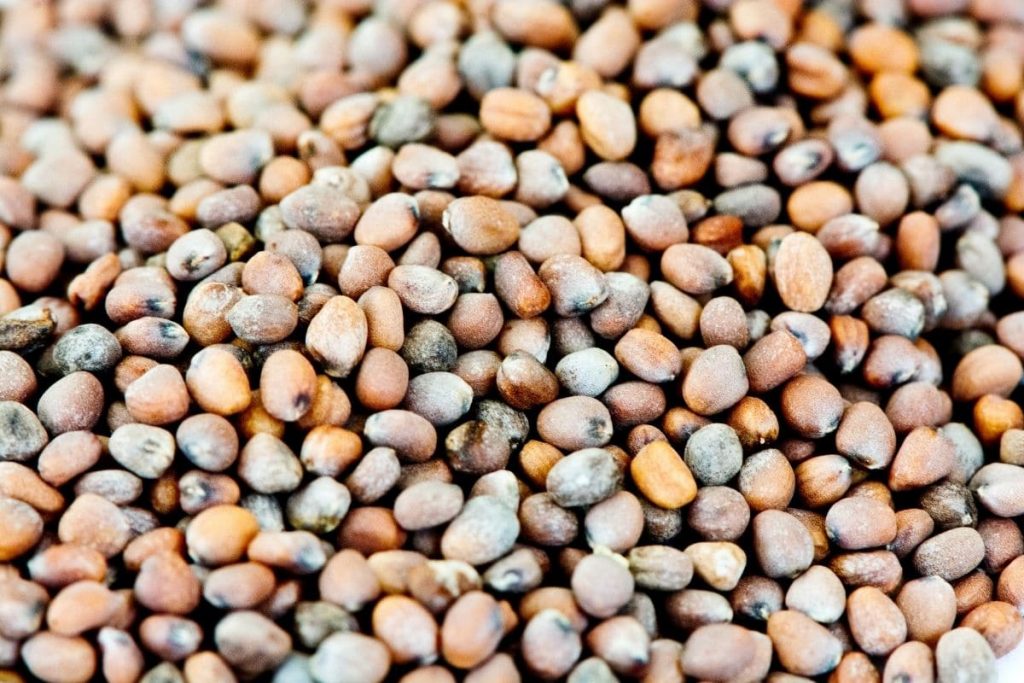Last updated on October 23rd, 2023 at 08:45 pm
Arugula also known as mustard or salad rocket, can be grown in the garden quite easily. In the kitchen, it is mainly the leaves that are used. But is arugula still edible when it flowers? Are perhaps even the flowers edible?
- Leaves spicy to mild and spicy taste
- use in salads, as a condiment or side dish to the main course
- Flowering time from June
- flowers are edible
- Taste of inflorescences very mild
Contents
Hot and spicy
You can harvest arugula as early as four to six weeks after sowing. As a rule, harvesting is possible until October. Throughout the growing season, leaves usually always sprout new. Mainly the leaves and stems are used in cooking. In taste they are very spicy, nutty, young still very tender and mild. With age, they become spicier and more bitter. Rocket is often used in salads and as a garnish for main dishes. Older leaves are good as a seasoning. Harvesting takes place:

- with a leaf length of 10 to 15 cm
- cut leaves 2 to 3 cm above the ground
- sprout again this way
- on sunny afternoons
- then nitrate content low
If the young, tender leaves are not processed immediately, they can be kept fresh in a damp cloth in the refrigerator for three to four days.
Note: There are two types of rocket: the annual garden rocket (Eruca sativa) with white flowers and the perennial wild rocket (Diplotaxis tenuifolia) with yellow inflorescences.
Flowering time from June
From June until September, arugula flowers. The flowers themselves, also the buds and seeds are also edible. Among gourmets, the flower is considered a true delicacy. In taste it is:
- spicy, slightly sweet
- milder than the leaves
- slightly reminiscent of watercress

Harvesting the flowers should be done either at the bud stage or immediately after flowering, then they are very mild and tender. The use can be fresh in
- Salads
- Spreads
- desserts or
- cocktails
However, the existing leaves are still edible when arugula blooms. They are then though:
- narrower and smaller
- harder in structure
- more bitter and pungent in taste and
- contain a high nitrate content
Note: The leaves owe their pungent and sometimes bitter taste when old to the mustard oil glycosides they contain. These have a health-promoting effect.
Flowers quadrupinnate
Depending on the variety of arugula, it blooms in yellow or white. However, their structure is the same:
- quadrupinnate and hermaphroditic
- umbrella-like at the beginning
- with increasing age racemose
- many single flowers
- sepals 4 to 7 mm long
- partly downy hairy with white edge
- 7 to 15 mm long and 5 to 8 mm wide petals
- six stamens
- ovary with 20 to 32 ovules
The seeds are in elongated capsules, these are on the side of the stems. The seeds are also edible.

Prevent flowering
If only harvesting leaves throughout the growing season is desired, it is important that the plant does not flower. To prevent this, simply remove the inflorescences at the base. A simple pinching out of these is sufficient. However, it should be noted that if seeds are also to be harvested, then not all inflorescences are removed, but some remain. The dried seed is then harvested, subsequently post-dried and threshed out of the capsules. Storage is in airtight containers, cool and dark.
Frequently asked questions
Is it true that arugula is toxic to humans?
Like other lettuces, it contains nitrates. In fact, it is one of the most nitrate-containing types of lettuce. If this nitrogenous substance is consumed in large quantities, it can be dangerous to health. Mainly in young children, it hinders the transport of oxygen in the blood.
What should be considered when sowing arugula?
The soil must be deeply loosened. In the process, two liters of compost are incorporated into one square meter of surface. The soil temperature should be 15 degrees. Sowing is done in rows, one centimeter deep and cover thinly with soil. The distance between rows should be 20 cm.
What care is necessary after sowing?
Rocket is quite easy to care for. The soil should be regularly loosened and kept free of weeds. Fertilization is not necessary. The plants must be sufficiently watered. However, waterlogging should not occur.


